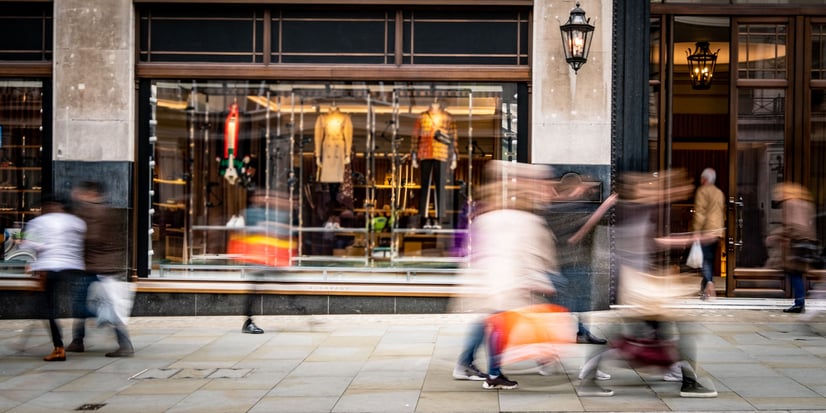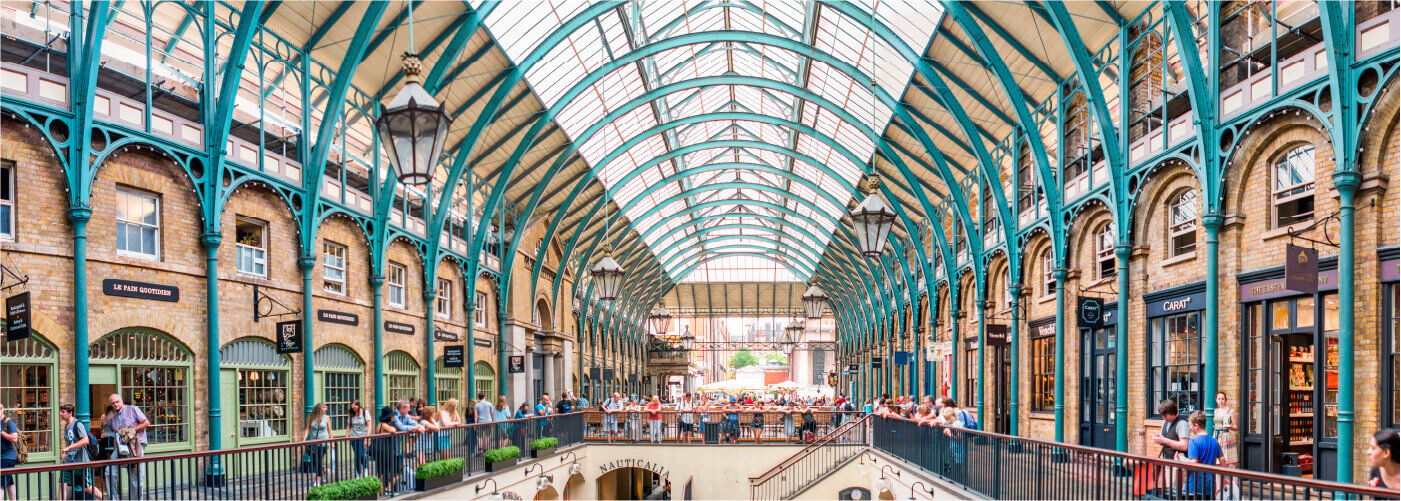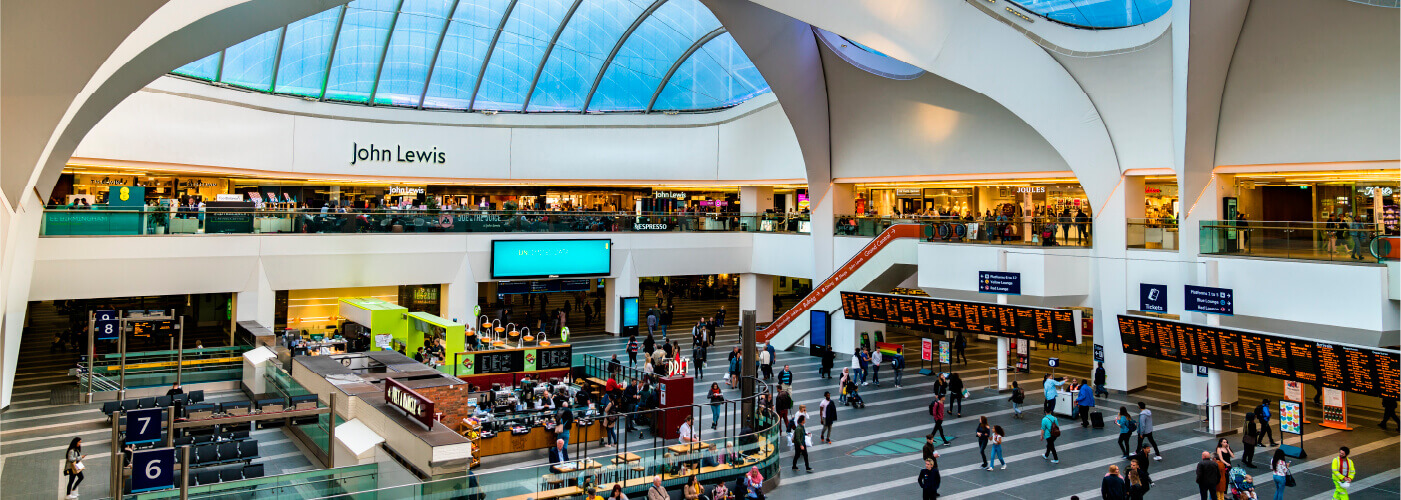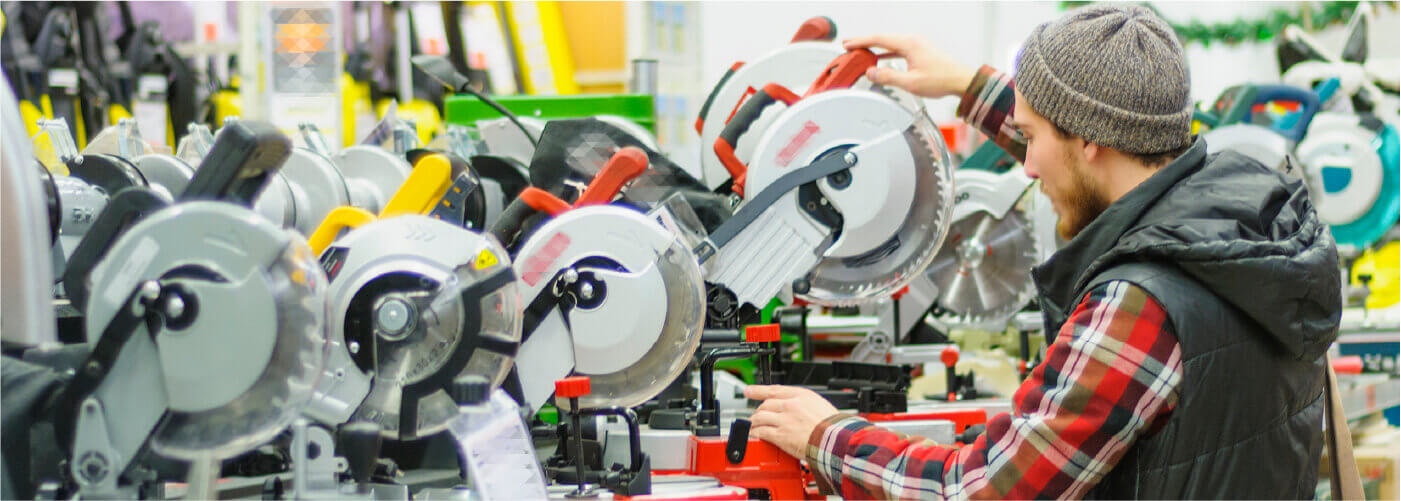
Footfall rates in city high streets are struggling to return to pre-coronavirus lockdown levels, dashing the hopes of many retailers. Statistics from The University of Oxford Covid-19 Impact Monitor show that in the UK, major city centers are still significantly quiet as Britons continue to work from home and shun public transport. This is despite a government drive to encourage people back into shops, restaurants, bars and workplaces.
Areas including Manchester’s commercial office area of Spinningfields and Earl’s Court in London are some of the worst hit. Both share similarities in terms of being workplace destinations, rather than commuter hometowns, which means that during lockdown, almost all premises in these areas closed as office workers shifted to working from home. Even now, with non-essential retail open once more, many workers still haven’t returned to the office, rendering demand for retail and hospitality services in the area almost non-existent.
It’s the same story across much of the UK. Research from the Local Data Company shows that during July, almost one third of British high street shops hadn’t reopened in the weeks after lockdown relaxation – with that proportion increasing to more than half in some areas.
Even as consumers return and life slowly comes back to cities and high streets, there is no denying that the pandemic and subsequent lockdowns have brought about seismic change in how people live, shop, work, eat and play. For even the healthiest retailers, then, this is as an opportunity to re-evaluate how their store estates should be and how they should work alongside their e-commerce operations.

How Covid-19 could reset city center stores
Even before the coronavirus pandemic, city high streets were in a state of flux as consumers increasingly chose to shop online or head to large retail parks and shopping centers, which tend to be more easily accessible by car and have added perks such as free parking. Now, as more workers continue to work from home long-term, we are seeing an inevitable decline in people heading to transport hubs and office-dense locations.
But experts say that retailers shouldn’t lose hope: cities and their vibrant retail stores will recover, but they must adapt. And retailers are used to adapting. Already, over the past few years many have responded to the growing popularity of online retail by reimagining and re-imaging their traditional high-street stores. Bookshops have transformed into reading areas with cafes and soft seating. Fashion stores showcase the latest trends during in-store events, and connect with their fans through social experiences in person and online. Indeed, across all sectors, retail has moved far beyond the transactional, practical nature of making purchases.
Experts recommend additional measures for city centers to thrive, encouraging the designing of places for people and not cars to ensure there is a more attractive and accessible public realm. This will involve turning more abandoned offices and stores into thriving residential areas and prioritizing attractive green spaces over roads. In the Build Back Better report, authors argue that “our towns and cities must no longer be designed solely around the car as people learn to appreciate the benefit of open spaces,” highlighting the importance for people to be able to access to the services they need in a short walk.
UK department store retailer John Lewis & Partners is still putting its future in city centers. It recently signed a 20-year lease with Sheffield City Council which runs to 2040 and includes a refurbishment planned for 2021, all part of Sheffield’s ‘Heart of the City II’ plans to drive strategic investments in the city.
“Shops continue to play a crucial role in our brand story, alongside a strong e-commerce offering,” said the director of Property and Procurement at John Lewis. “Our focus is on ensuring that we have the right space in the right locations where our customers want to shop.”
Most hope that the eerie silence of the city center and high street is a temporary measure as we fight off the impact of coronavirus. In the meantime, the retailers that can are planning for the future by investing heavily in their e-commerce capabilities while exploring new ways to do business on the high street, such as changing their lease terms to reflect individual stores’ turnover. A new arrangement for All Saints will allow the fashion retailer to pay turnover-based rents on most of its 41 UK stores. New Look and H&M are also pushing for new turnover-based terms.
How are smaller urban areas transforming?
Retail veteran Bill Grimsey believes the pandemic is “the perfect opportunity to repair the UK high street’s neglected social fabric.” In the Build Back Better report, he suggests Covid-19 has accelerated a cultural shift around what people want to see from their high streets and town centers, putting the emphasis on creating places that serve a specific, local community. Nike’s Live concept is a great example of this. Its small store format focuses on localization, using data to pick up and meet the needs of shoppers who are located nearby.
In Manchester’s commuter town of Sale, which saw a store reopening rate of 88% within two weeks of lockdown being lifted, the value of a new large stay-at-home community is clear. More than ever, people are visiting their local high street rather than travelling further afield to shop. High streets that already have a good mix of outlets lend themselves best to this scenario, with consumers able to pick up household supplies, eat out and get a fashion fix all in one trip.
With more people working from home, then, they will need more from where they live. Office workers used to popping out for coffee, a sandwich and a quick lunchtime shopping fix are less likely to get in the car and drive to an out-of-town center during their lunch break. The UK’s Office for National Statistics shows that less than 16% of the population currently lives within 200 meters of a retail cluster. That may now change as larger retailers look to create more of a local presence and invest in local hubs, creating a healthy mix of independent and larger brands on local high streets. Even if the numbers for this kind of business model may not have stacked up before, maybe now they will.

What will become of large shopping centers/malls?
UK shopping center operator intu is confident of a return to relative normality across its premises as consumers seek to revert to old habits and seek normality in the coming months.
Recent survey results carried out by the business suggest that the majority of people are eager to return to the shopping and spending patterns they followed pre-lockdown, with 81% saying they would visit shopping centers with the same or more frequency than they did pre-Coronavirus. Almost two thirds of respondents intend to spend either the same or more as they did before coronavirus.
The same survey found that in terms of what people are most looking forward to as more normal life resumes, eating out ranked highest, followed by social activities with family and friends, then a visit to a shopping center.
At the same time, though, consumers are looking to shopping centers and retailers to help keep them safe. They want clear visual reassurance as they venture out, and expect retailers to implement practical safety measures such as clear social distancing restrictions. They also want to see crowd control solutions, including online booking to visit the store/mall, the ability to check in when they arrive, contactless click and collect/returns, and contactless payments.
Which areas of retail are thriving?
While the past few months have been tough for some retailers, others have been thriving. Those in the confectionary sector continue to fare well despite the pandemic, with the likes of artisan chocolatier Montezuma announcing the opening of more stores and hiring of more staff. The company currently has an estate of six stores and is planning on opening four new outlets each year for the next five years mainly across regional towns.
Chocolatier Hotel Chocolat is also launching a new out-of-town store format. Located close to its distribution center in Cambridgeshire, the new store will have an outdoor and indoor seating area and café and will sell all Hotel Chocolat products alongside out-of-season and misshapen products to reduce waste at the company.
Another retail sector thriving amid the pandemic is home and DIY. Trade retailer Screwfix, which currently has 680 UK stores, plans to open 40 new stores in the coming months in a bid to provide its customers with added convenience.
Rental services are going from strength to strength too. John Lewis has partnered with rental experts Fat Llama to offer furniture rental from its stores in Greater London. The new service will enable customers to rent a select range of John Lewis products for a certain period of time with the option to buy the furniture at any point during the contract.
“We want to make our products and services as compelling and meaningful to the next generation of customers and how they want to live,” said Jonathan Marsh, director of Home at John Lewis.
UK household name Selfridges is also planning to launch a clothing rental service as part of a wider sustainability drive across its business, which includes selling second-hand clothing, recycling and repair services.

The future of physical retail
While the long-term impacts of Covid-19 on the retail industry remain to be seen, those showing greatest resilience are able to adapt quickly and continue to deliver their customers a rich omni-channel experience that meets them in the right places at the right moments. Customers want to be able to move between online, physical and delivery channels seamlessly, and they will expect retailers to move to where they are now to make their lives safer, more fulfilling and more convenient.
Authors of the Build Back Better report paint this as a golden opportunity to rebuild our high streets while staying true to our values: “Out of the ashes and pandemic rubble will eventually emerge signs of recovery in every town up and down the country. Brave entrepreneurs will create businesses that reflect a new value system as people are appreciating spending less money, breathing cleaner air, noticing more wildlife and sharing a stronger sense of community.”